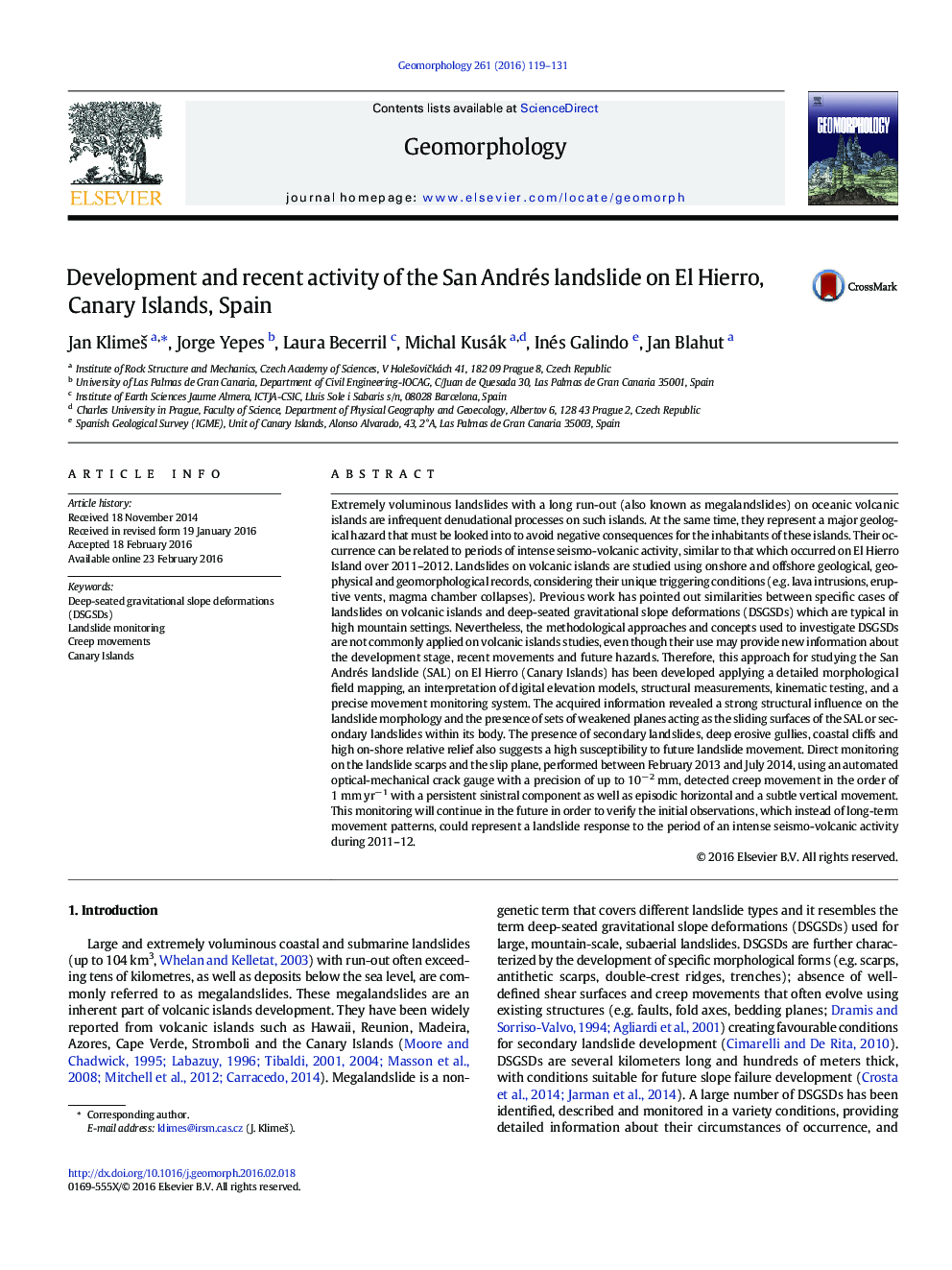| کد مقاله | کد نشریه | سال انتشار | مقاله انگلیسی | نسخه تمام متن |
|---|---|---|---|---|
| 4684051 | 1635388 | 2016 | 13 صفحه PDF | دانلود رایگان |

• A long-term, automated landslide movement monitoring system was installed.
• A year-long monitoring shows creep activity on the landslide scarps.
• Environmental conditions remain favourable for possible future landslide activity.
• Morphological evidence suggests that the landslide has recently developed.
• The newly obtained data suggest possible future movement at accelerated velocities.
Extremely voluminous landslides with a long run-out (also known as megalandslides) on oceanic volcanic islands are infrequent denudational processes on such islands. At the same time, they represent a major geological hazard that must be looked into to avoid negative consequences for the inhabitants of these islands. Their occurrence can be related to periods of intense seismo-volcanic activity, similar to that which occurred on El Hierro Island over 2011–2012. Landslides on volcanic islands are studied using onshore and offshore geological, geophysical and geomorphological records, considering their unique triggering conditions (e.g. lava intrusions, eruptive vents, magma chamber collapses). Previous work has pointed out similarities between specific cases of landslides on volcanic islands and deep-seated gravitational slope deformations (DSGSDs) which are typical in high mountain settings. Nevertheless, the methodological approaches and concepts used to investigate DSGSDs are not commonly applied on volcanic islands studies, even though their use may provide new information about the development stage, recent movements and future hazards. Therefore, this approach for studying the San Andrés landslide (SAL) on El Hierro (Canary Islands) has been developed applying a detailed morphological field mapping, an interpretation of digital elevation models, structural measurements, kinematic testing, and a precise movement monitoring system. The acquired information revealed a strong structural influence on the landslide morphology and the presence of sets of weakened planes acting as the sliding surfaces of the SAL or secondary landslides within its body. The presence of secondary landslides, deep erosive gullies, coastal cliffs and high on-shore relative relief also suggests a high susceptibility to future landslide movement. Direct monitoring on the landslide scarps and the slip plane, performed between February 2013 and July 2014, using an automated optical-mechanical crack gauge with a precision of up to 10− 2 mm, detected creep movement in the order of 1 mm yr− 1 with a persistent sinistral component as well as episodic horizontal and a subtle vertical movement. This monitoring will continue in the future in order to verify the initial observations, which instead of long-term movement patterns, could represent a landslide response to the period of an intense seismo-volcanic activity during 2011–12.
Journal: Geomorphology - Volume 261, 15 May 2016, Pages 119–131